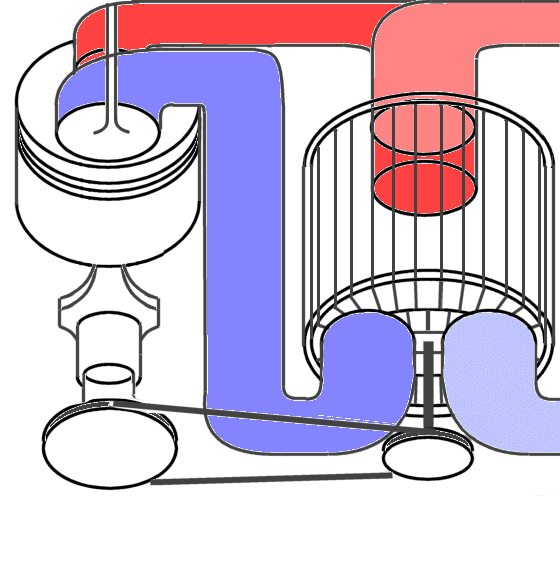Pressure Wave Supercharger (Comprex)

Function
Information concerning the pressure wave supercharger is extremely scarce lately. Judging from its technology this is a pity. It is perceived as the most brilliant kind of charging because it unites the advantages of the
turbocharger with those of the compressor. It makes use of the exhaust gas energy and is still spontaneous, without turbo lag. Unfortunately, it has to be adapted to every engine anew. Nevertheless, it has delivered
sensational results when it was used. It almost seems as if the patent holders want to prevent its market launch.
How it works
A drum with a lot of continuous openings is driven by the crankshaft. There is an exhaust gas side in the rear and a fresh gas side in front, featuring two pipes each. The fresh gas enters from the front (light blue); after
a quarter rotation the fresh gas is compressed by the exhaust gas which enters the drum (dark red), yet without mixture. After a quarter rotation the fresh gas leaves in front under pressure (dark blue). The blast formed
by the exhaust gases strikes back and gets off another quarter rotation later (light red). The continuous process starts over again.
Important
It is important to mention that the performance loss due to the driving of the timing belt is very low. On the contrary, with higher revs a low performance transmission of the pressure wave supercharger should be
possible even vice versa to the internal combustion engine. This connection and its gear ratio is very important for the flawless control of the process. It must occur in such a way that in all operation areas the full
exhaust gas energy is used, but no exhaust gas must reach the fresh gas pipes.
Unfortunately, the exact adaptation of the charger to the length and the form of the chambers and the positioning in the engine compartment means a raised expenditure. Space problems can occur because of the
mechanical connection of the relatively large subassembly to the engine and the gas guidance. An additional noise development in the engine compartment is another small disadvantage. The fact that the equipment
is sensitively to changes on the aerial side, could be compensated with modern electronically controlled accelerator gas pedals and resonance systems maybe better. 02/08
|